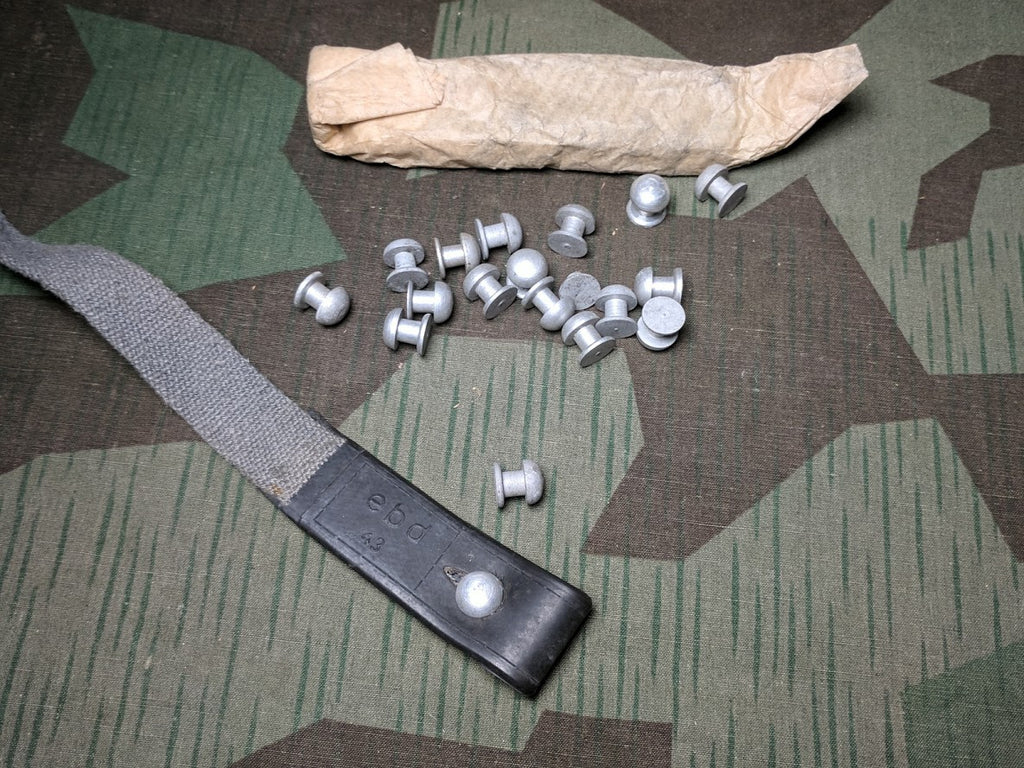

stamps and GM15-styled eyepieces and one with the impressed metal stamp K.u.K.

The harness is 6 pointed and not adjustable, but the straps are rubberized. This causes that the user has to blow out the air hard. The valve is in a metal house, the intake is the exhale valve too. Due to lack of Tissot-tube system and antifog inserts, the cheeks were designed bigger so the user could wipe off the fog with them but these "wiping wrinkles" are much smaller than on the GM15. The celluloid eyepieces are in metal assemblies. The facepiece is made of rubber-coated pale grey colored canvas. The M.17 or 17M, depending on the language is the direct Austro-Hungarian copy of the GM15, but the same designation can be used for the imported GM15 masks as well. It was called as Stoffmaske (cloth mask), Gummimaske (Rubber mask) or Rahmenmaske (Frame mask). Most of these masks were used in action during the gas attacks on the Italian front at the battlefields of Isonzo and Doberdo. stamps on the left side of the facepiece and on the valve and the size number are under the manufacturing date. used GM15 masks differed from the GM15 were the K. K., in Hungarian: Császári és Kiályi Hadsereg) to complete the protection of the soldiers beside of the rebreathers and M.15/15M masks. Juni 1916) by the Austro-Hungarian empire the masks were bought from Germany and were issued to the army (in Austrian: Kaiserlich und Königlich Landwehr, shortened version: K. Prior to the Monte San Michele gas attack (29. Kaiserlich und Königlich Armee (Austro-Hungarian Royal Army) The US Navy Gas Mask, Mark I (Mouth Canister Type) mask is the direct copy of the mask. Gerasimov was quoted by Tass news agency as saying that the two sides will continue to expand their military cooperation.The first masks were made from the coverage of a downed French airship called Alsace.

Last month, the chief of the joint staff department of China's Central Military Commission Liu Zhenli also held talks with Russia's chief of general staff Valery Gerasimov via video link. The passage prompted Japan to dispatch vessels to monitor their movements while Taiwan, which China claims as part of its territory, deployed an aircraft and also ships to keep watch over their transit.Īt the end of China's President Xi Jingping's visit to Moscow for talks with Russian President Vladimir Putin in March, the two leaders issued a joint statement which contained familiar accusations against the West - that Washington was undermining global stability and NATO was barging into the Asia-Pacific region.Ĭhina and Russia have pledged stronger military ties, and on Monday, China's Defence Minister Li Shangfu met with the head of the Russian navy, Admiral Nikolai Yevmenov, in Beijing.Īnd just before that, Russia and China's foreign ministries held a round of consultations on anti-missile defence at end-June. They later sailed past Japan's Okinawa islands, the site of a major U.S. The same ships, which belong to the Pacific fleet of the Russian Navy, passed through waters near democratically governed Taiwan at the end of June. Both vessels belong to Russia's Pacific Fleet, headquartered in Vladivostok.ĭuring their seven-day visit, the ships will conduct naval drills with the Chinese navy in Shanghai, that will include practices on formation movements, communication and sea rescues, according to the report. The two frigates - Gromkiy and Sovershenniy - made port at the financial hub of Shanghai on Wednesday, Chinese state television reported. BEIJING, July 6 (Reuters) - China hosted two Russian warships that had earlier sailed past Taiwan and Japan, and the vessels are expected to hold a joint drill with the Chinese navy during their visit, demonstrating the enduring military cooperation between the two countries.


 0 kommentar(er)
0 kommentar(er)
